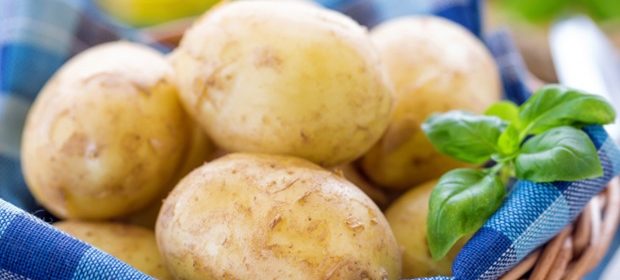Foods High in Carbohydrates

Carbohydrates are one of the most important food groups worldwide and examples of these foods include:
- Grains such as rice, wheat, barley and maize
- Bread, pasta and cereal
- Beans, nuts, seeds, vegetables and fruits
- Potatoes and root vegetables like yams and sweet potatoes
- Bran
Carbohydrates are an important source of energy in the diet, mainly because they require less water to digest than proteins or fats. Proteins and fat are important for building and repairing tissue, while carbohydrates provide energy for all reactions in the body including the breakdown of all nutrients consumed in the diet.
The body can utilize fats and proteins for food by breaking them down into individual components. However, the brain and nerves depend on the availability of glucose as their energy source. Making glucose from proteins and fats uses up more energy than breaking carbohydrates down into simple sugars. Carbohydrates contain 15.8 kilojoules (3.75 kilocalories) of energy per gram, while proteins contain 16.8 kilojoules (4 kilocalories) per gram and fats contain 37.8 kilojoules (9 kilocalories) per gram.
Recommendations for diet
According to recommendations by the World Health Organization (WHO), the intake of total carbohydrate should be enough to provide 55% to 75% of the total energy requirement. Proteins should provide 10% to 15% of the total energy and fats 15% to 30%. This requirement can be met by consuming a daily minimum of 400 grams of vegetables and fruits including 30 grams of pulses, nuts and seeds.
The Institute of Medicine recommends that 40% to 65% of the energy required should come from carbohydrates, especially complex carbohydrates.
Dietary carbohydrate classification
Carbohydrates can be classified as:
- Simple sugars including monosaccharides and disaccharides
- Complex sugars and carbohydrates including oligosaccharides and polysaccharides. Complex carbohydrates include fruit, vegetables and whole-grains.
According to new recommendations from the USDA, all carbohydrates in the diet should come from fibre-rich foods and whole grains. How quickly the glucose in food is absorbed is described as the food’s glycemic index. Foods with a low glycemic index take longer to raise blood sugar levels and are recommended over those with a high glycemic index (e.g. rice, corn flakes and simple sugars).
Sources
- http://medweb.bham.ac.uk/easdec/prevention/CarbohydrateBooklet1_A4.pdf
- http://ull.chemistry.uakron.edu/genobc/Chapter_17.pdf
- http://www.ndwheat.com/uploads%5Cresources%5C387%5Ccarbohydrates.pdf
- http://www.csun.edu/~jm77307/Carbohydrates.pdf
- http://www.moh.gov.my/images/gallery/rni/4_chat.pdf
- www.health.gov/dietaryguidelines/dga2005/document/pdf/Chapter7.pdf
Further Reading
- All Carbohydrate Content
- What are Carbohydrates?
- Carbohydrate Structure
- Carbohydrate Monosaccharides
- Carbohydrate Metabolism
Last Updated: Feb 26, 2019

Written by
Dr. Ananya Mandal
Dr. Ananya Mandal is a doctor by profession, lecturer by vocation and a medical writer by passion. She specialized in Clinical Pharmacology after her bachelor's (MBBS). For her, health communication is not just writing complicated reviews for professionals but making medical knowledge understandable and available to the general public as well.
Source: Read Full Article